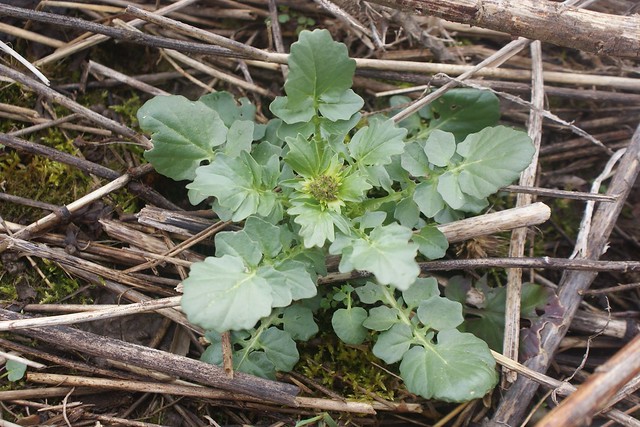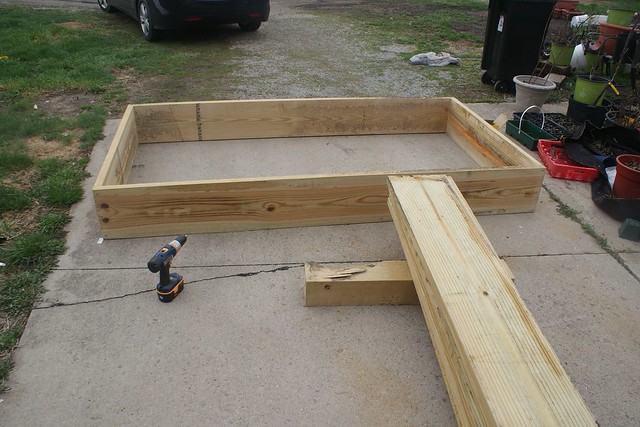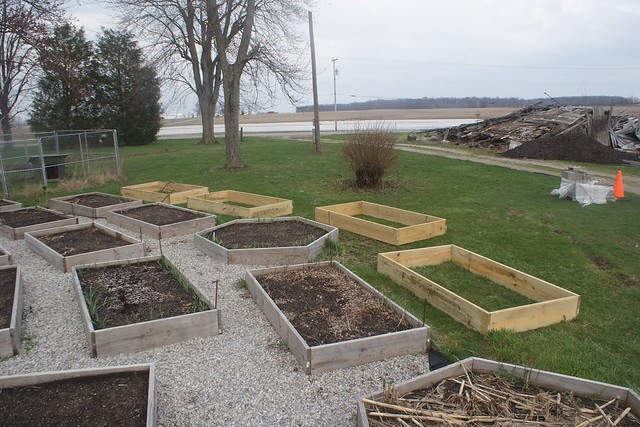After coffee and a few pieces of Leah's excellent banana bread, I pulled on my muck boots and waded out into our very skooshy farm. We've had significant amounts of rain over the past few days (finally!) and the soil in the field is pretty waterlogged.
I drove some T-posts to mark out the locations of soon-to-be-planted trees, along the better-drained and less consistently marshy eastern edge of our fallow field. This year I'll be putting in between ten and twenty blight-resistant chestnut trees (about five different varieties), interplanted with black locust seedlings. The goal is to begin converting this portion of our field towards a more productive and diverse forest area that will one day provide us with food and timber.
All the plants in the area are loving the moisture and have seemingly sprung to life overnight. The grass which looked patchy and very dormant as recently as a week ago now looks like it might need mowing soon (ugh).
We've been reading Gene Logsdon's Living at Nature's Pace: Farming and the American Dream this month for our Meetup group's book club, and it's got me reminding myself of the importance of being constantly aware of and an expert on one's own place, down to every seemingly mundane detail.
So amongst the moss and wet and mouldering remnants of last year's growth (and the ever more ubiquitous spiked rosettes of teasel), I spotted a few plants I was unfamiliar with:
After some research, I'm pretty sure this is some kind of cress. The closest ID I could find was Early Winter Cress, but I'm still not 100% sure. I'd like to be sure before I try nibbling on it. But I want to. Because I love cress.
Leah also noticed some type of volunteer sedum growing down by the swale on one of the piles where I've dumped potentially live plant material that I didn't want gaining a foothold in our compost piles. We've found some similar looking plants on Google image search, but are also finding them identified (potentially mis-identified) as various different species of sedum.
We're discussing rescuing it from the unruly riot that is our woods edge down by the swale and giving it a more dignified home in a pot up near the house. It certainly is lovely looking.
We've been planning to expand our existing Zone 1 raised bed area that we use for more intensive cultivation of annuals along the southeast side of the house. We've had the lumber sitting around for a while, but I just got around to drilling and screwing the beds together today.
I assembled four 4'x8'x12" beds, and Leah and I tried some different placements to see what looked best. We're gonna let them sit for a bit and see how it looks from different angles before we extend the fabric/gravel and formally install them.
If you look closely in the picture above, you can see little sprigs of green around the interior edge of our raised beds... that's our garlic, dutifully performing it's duties as one of spring's tastiest ephemerals.
Speaking of garlic, we've had some garlic bulbs that we missed in last fall's "hasty harvest" sprout up bunches of greens at the same time as their more fastidiously harvested/stored/replanted brethren, and this has me thinking....
Leah reminded me that some people just leave the garlic in the soil year-round rather than harvesting it in summer and then replanting later in fall. I'm not sure what the advantages/disadvantages to this method, but I carefully dug up, separated and replanted our "forgotten" shoots at wider intervals. We'll see how they fare in relation to the cloves we planted in the fall. A garlic experiment! For science!





I haven’t any word to appreciate this post.....Really i am impressed from this post....the person who create this post it was a great human..thanks for shared this with us. leather corner sofa bed
ReplyDelete